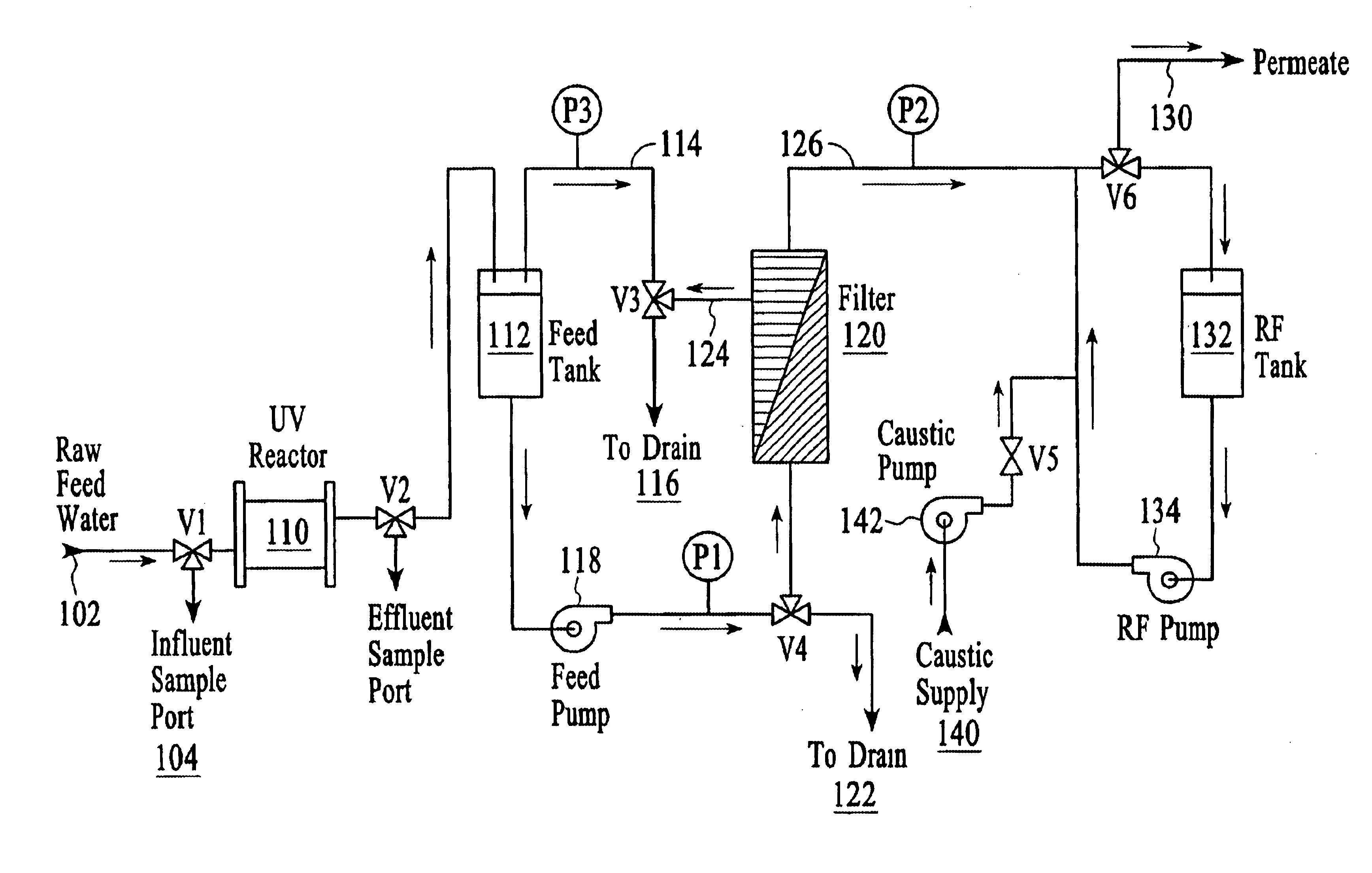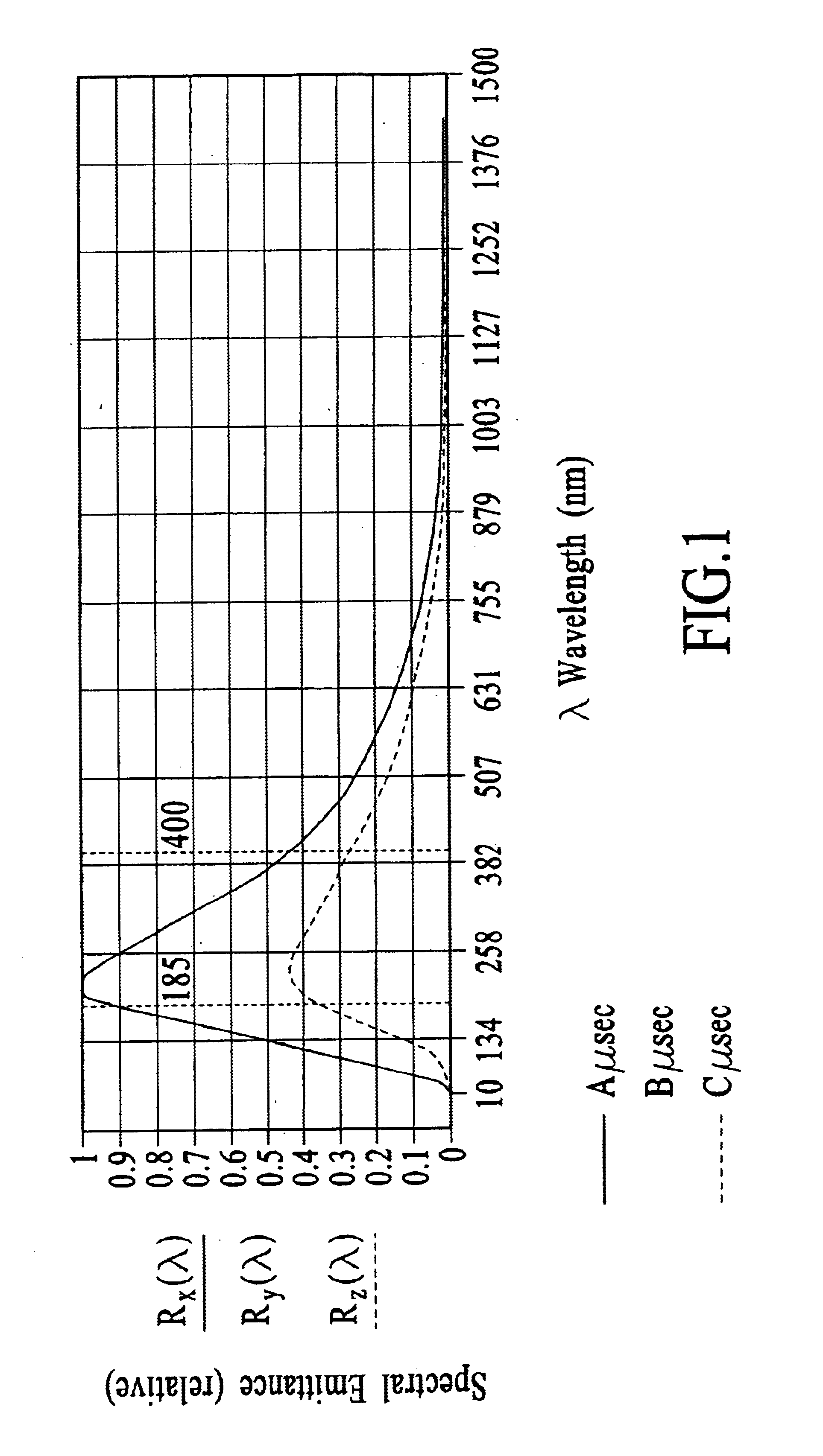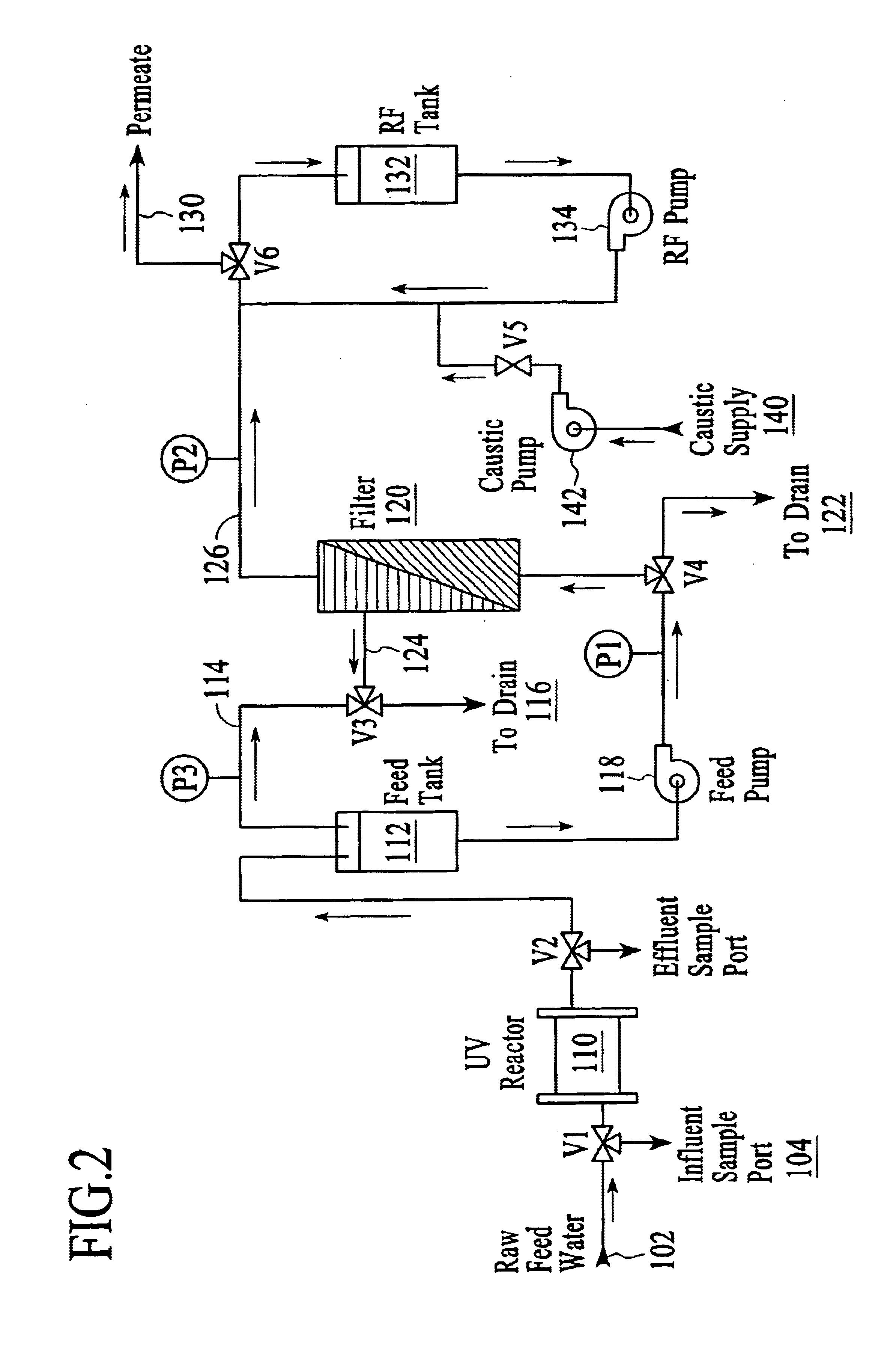Pulsed blackbody radiation flux enhancement
a radiation flux and blackbody technology, applied in the field ofpulsed blackbody radiation flux enhancement, can solve the problems of limited use, high capital, operating and maintenance costs, and difficult to remove water contaminated with pesticide or gasoline contaminants with conventional technologies, and achieve the effects of reducing operating footprint, oxidizing/reducing contaminants, and narrowing the bandwidth of usable uv energy
- Summary
- Abstract
- Description
- Claims
- Application Information
AI Technical Summary
Benefits of technology
Problems solved by technology
Method used
Image
Examples
examples
FIG. 4 is a representative illustration of a comparative analysis of a generally lower transmembrane pressure (TMP) in the case of the present invention as compared to a system of the priro art, over a time period roughly equivalent to about one (1) 30-minute filtration cycle. The graph shows a typical 30 minute filtration inverval between backwash cycles. The trans-membrane pressure (TMP), using the present invention is significantly reduced even though inorganic material including Fe / Mn complexes, which previously existed in a dissolved state prior to passage through the system, has precipitated and is now being trapped by the downstream mechanical filter. The reason for the enhancement of the flux is that organic loading has been greatly reduced because of the effective oxidation properties of blackbody UV.
FIG. 4 is representative of performance of a typical filtration system over the typical thirty minute filtration interval in between backwash cycles. The study was performed us...
PUM
| Property | Measurement | Unit |
|---|---|---|
| peak power | aaaaa | aaaaa |
| wavelengths | aaaaa | aaaaa |
| wavelengths | aaaaa | aaaaa |
Abstract
Description
Claims
Application Information
 Login to View More
Login to View More - R&D
- Intellectual Property
- Life Sciences
- Materials
- Tech Scout
- Unparalleled Data Quality
- Higher Quality Content
- 60% Fewer Hallucinations
Browse by: Latest US Patents, China's latest patents, Technical Efficacy Thesaurus, Application Domain, Technology Topic, Popular Technical Reports.
© 2025 PatSnap. All rights reserved.Legal|Privacy policy|Modern Slavery Act Transparency Statement|Sitemap|About US| Contact US: help@patsnap.com



